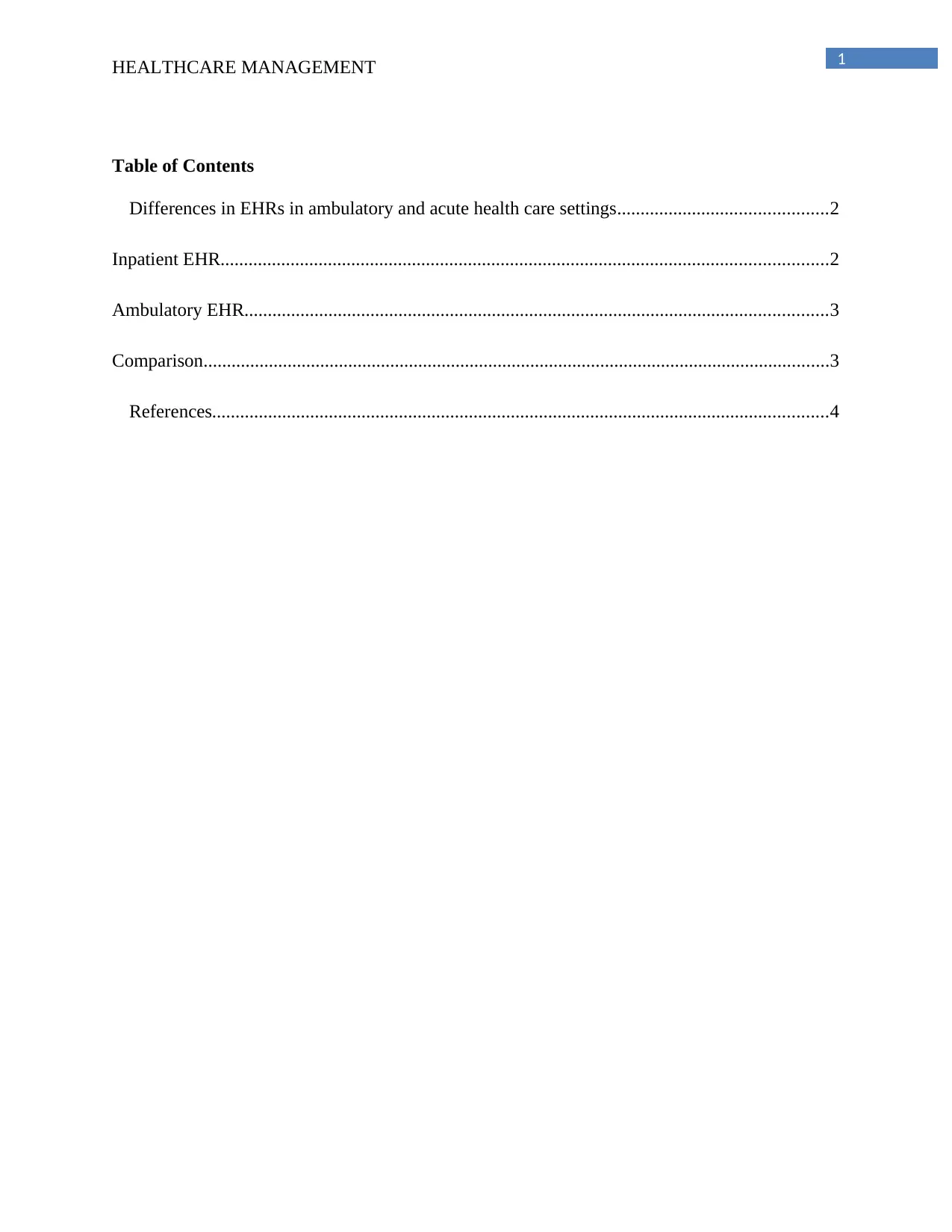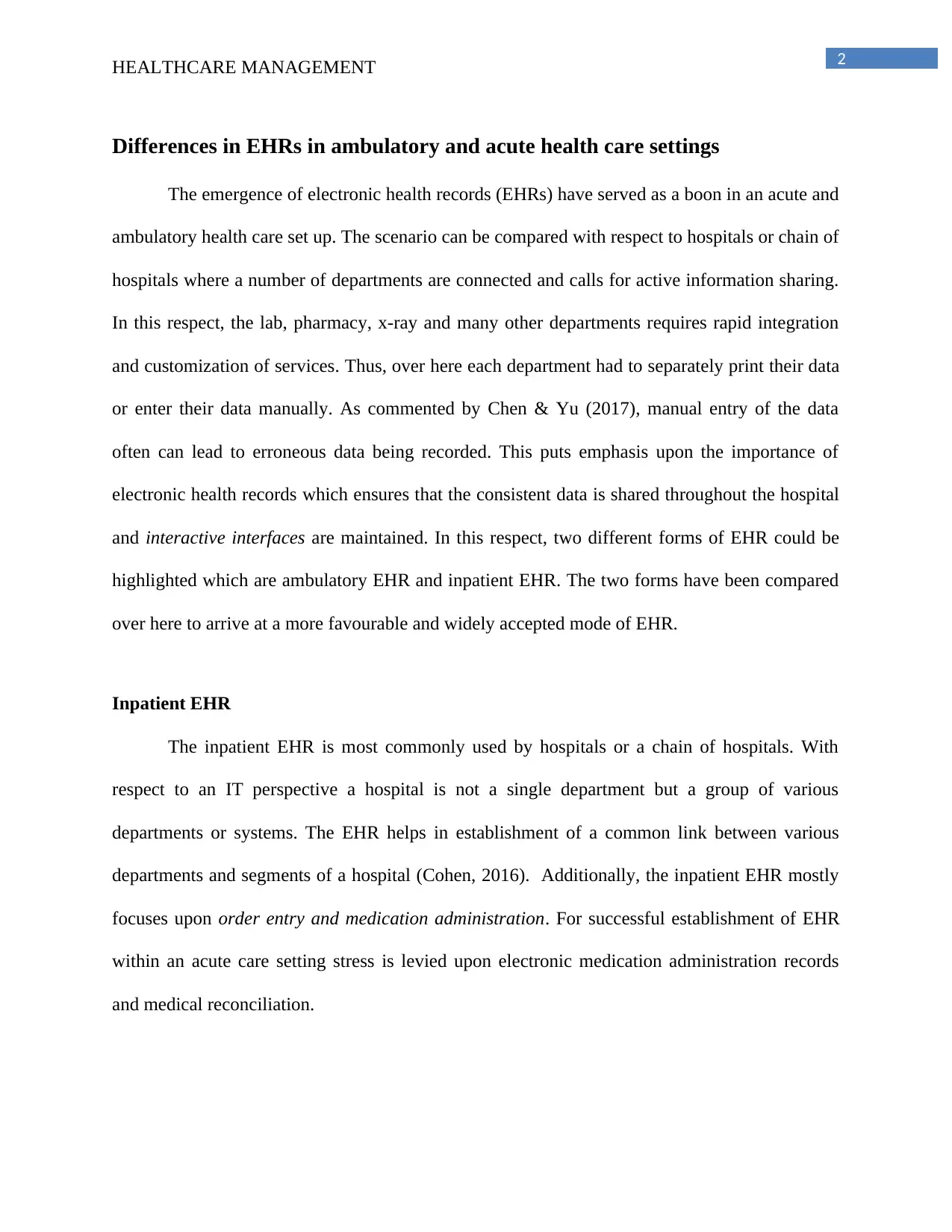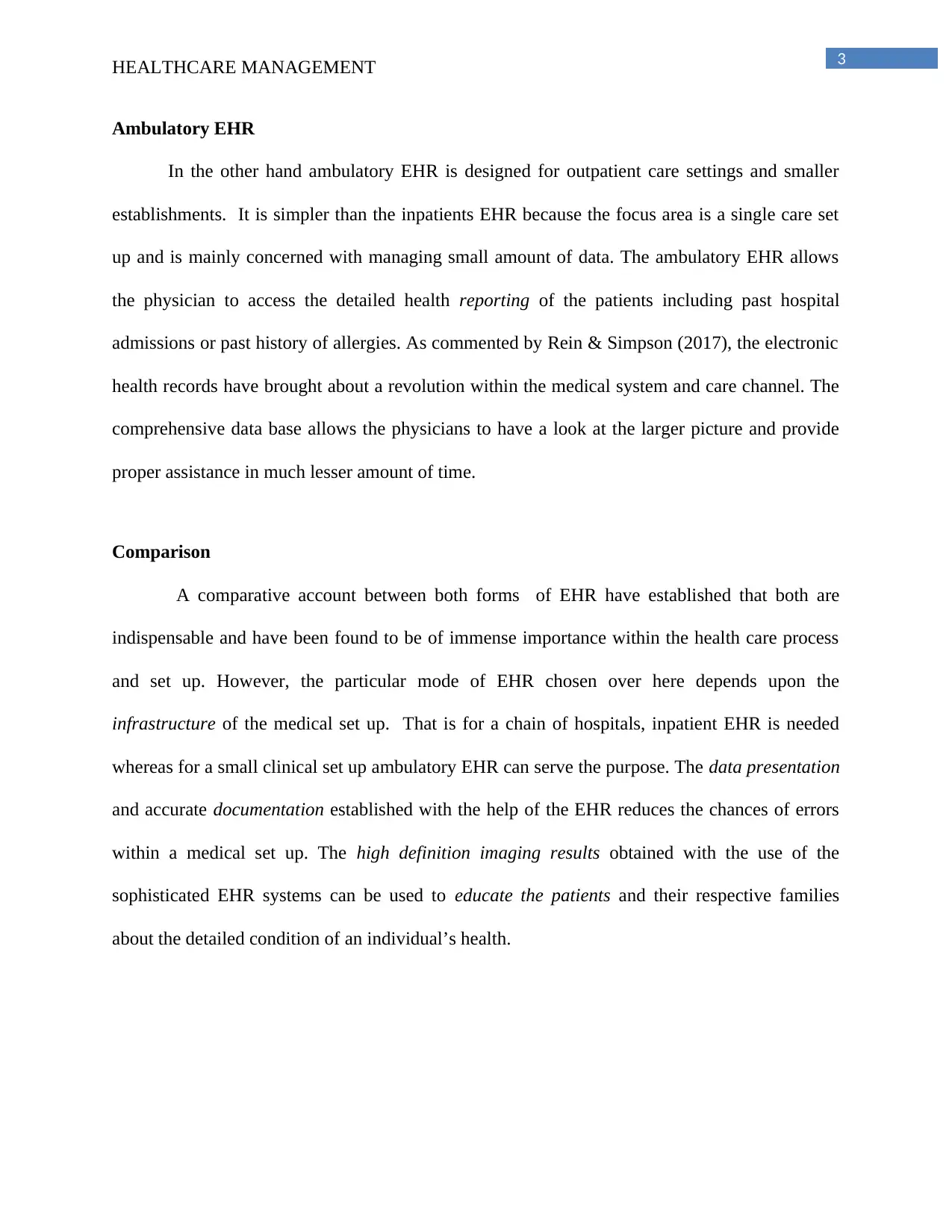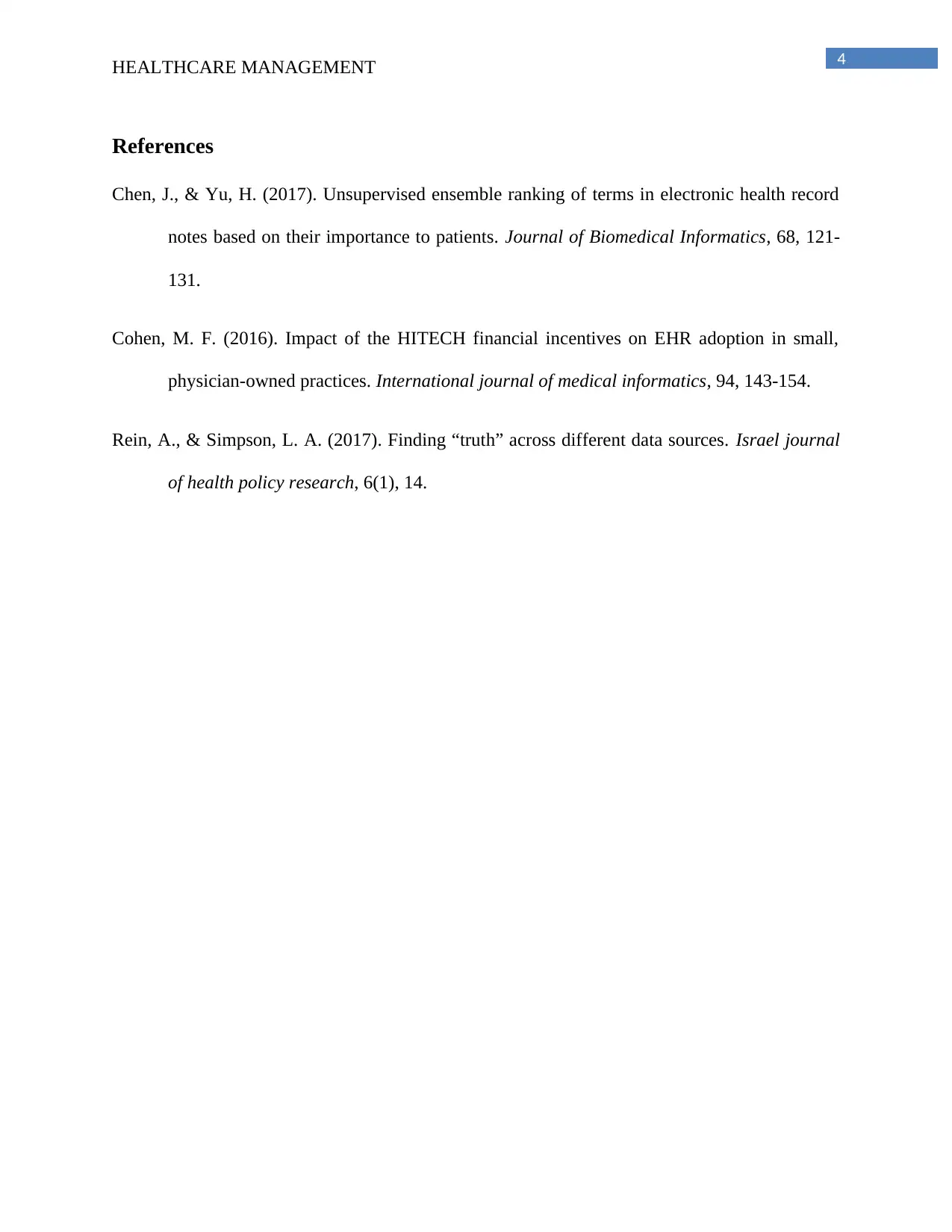Healthcare Report: Comparing EHRs in Ambulatory and Acute Settings
VerifiedAdded on 2020/04/21
|5
|706
|50
Report
AI Summary
This report examines the distinctions between electronic health records (EHRs) in ambulatory and acute healthcare settings. The report begins by defining the role of EHRs in modern healthcare, emphasizing their importance in data sharing and integration across different departments within hospitals and clinics. It then differentiates between inpatient EHRs, primarily used in hospitals for order entry, medication management, and electronic medical records, and ambulatory EHRs, designed for outpatient care settings and smaller establishments. The comparison highlights the specific advantages and applications of each type of EHR, emphasizing that the choice between the two depends on the infrastructure and needs of the healthcare setting. The report concludes by noting the benefits of EHRs, such as improved data accuracy and patient education, and provides relevant references to support the analysis.
1 out of 5












![[object Object]](/_next/static/media/star-bottom.7253800d.svg)